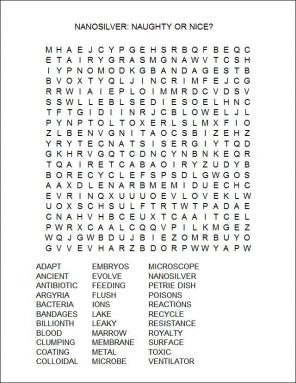Nanosilver: Naughty or nice?
Questions abound about the possible effects of those tiny antibiotic particles that are showing up all over
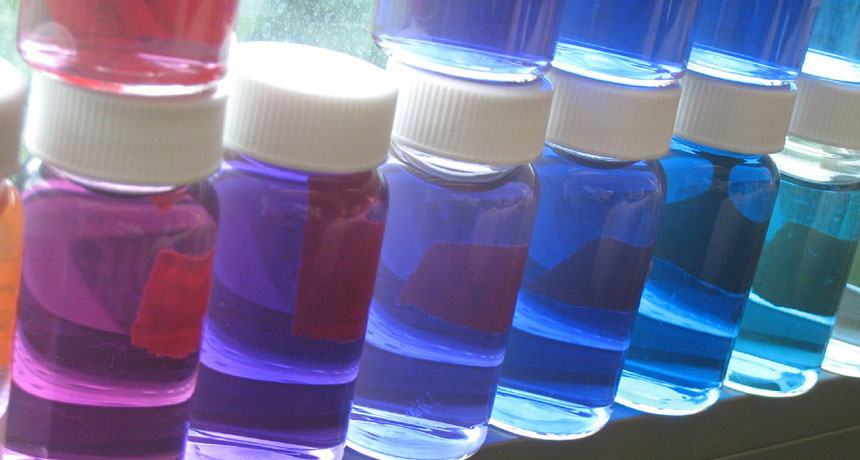
Silver nanoparticles can confer an array of colors when in solution. The particles in this image can be used to detect diseases. Others are used as antibiotics. But some scientists are beginning to worry that overusing the technology might cause problems.
Ginger Lab/University of Washington
Silver is beautiful — and a killer. The shiny white metal is a natural antibiotic. That means it kills bacteria. People have recognized this benefit since ancient times. Wealthy Romans ate using knives, forks and spoons made of silver. They understood that silver helped keep spoiled food from making them sick. In fact, historians think that is how we came to call eating utensils “silverware.”
Today, eating off silver is more about wealth than health. Still, silver continues to play a role in medicine. Doctors use silver-coated bandages to kill germs that might infect burns and other wounds. Silver also is sometimes used to coat medical devices, such as breathing tubes. This can reduce the likelihood that patients on ventilators (to help them breathe) will develop pneumonia from exposure to germs.
In just the last decade, silver’s use as a germ killer has expanded dramatically — and not only in medicine. Beginning around 2005, companies started adding a special form of silver to a wide range of everyday products. This silver was fashioned into amazingly tiny particles. Companies put it into socks, toothbrushes, washing machines, vacuum cleaners and other items.
Sometimes adding the special silver is promoted as a defense against bacteria that might make people sick. Other times, it’s more about neutralizing bacteria that cause stinky feet or smelly breath. At last count, more than 400 consumer products contained this form of silver, called nanosilver.
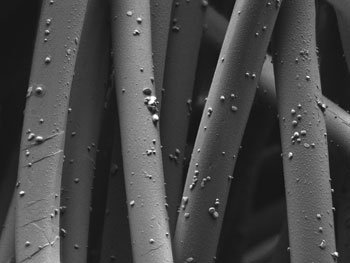
People have used silver products for thousands of years. But some scientists have begun to worry that adding so much nanosilver to so many things could harm our health or the environment. Experts have begun looking for answers. But so far, the findings are mixed.
Little particle, big surface
Scientists say there are several things that are important to know about nanosilver to assess its potential harm. First, nanosilver is so tiny that it can find its way into tiny spaces. These spaces include our cells and the cells of other living things. Second, because nanosilver particles are so small, they have very high surface areas. That means that relative to their volume, their surface is fairly big. Particles undergo chemical reactions on their surface. The more surface area, the more chemical reactions. Some of those reactions could be harmful. Others might not be.
The list of potential reactions includes what happens when silver reacts with moisture in the air — those nanoparticles shed silver ions. Silver ions are atoms of silver with a positive electric charge. Some research suggests silver ions can kill a microbe by damaging its cell membranes. This can make the microbe’s cells “leaky.” Affected cells soon die.
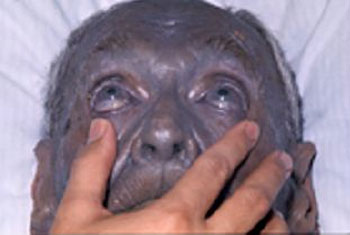
But what happens if nanosilver gets into human cells? Some researchers have wondered whether the particles — or the ions they release — can cause harm.
Jim Hutchison is among those scientists trying to figure this out. He is a chemist and an expert in nanoparticles at the University of Oregon in Eugene.
The most visible effect of silver, Hutchison says, is a condition called argyria (Ahr–JEER–ee–uh). People exposed to very large amounts of silver can suffer from this condition. Although it turns the skin blue, it doesn’t appear to otherwise affect health.
Historians suspect argyria is the origin of the term “blue blood.” It is used to describe people of noble birth. Royalty would likely have worn a lot of silver jewelry. Nobles also would have used real silver tableware when eating and drinking.
These blue bloods also may have drunk a lot of colloidal silver. That’s a liquid into which silver particles are suspended.
“Colloidal silver has been used for a long time,” says Hutchison. “It was thought of as a cure-all for many different illnesses.”
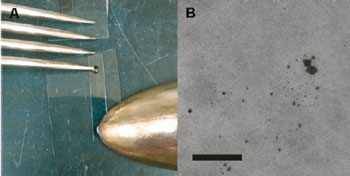
So far, Hutchison’s research suggests nanosilver and the silver ions it sheds probably aren’t harmful to people (beyond turning some of them blue). “You can never prove every technology is going to be safe before you use it,” he says. “But silver doesn’t seem to be toxic to us.”
In a 2011 study published in the journal ACS Nano, Hutchison’s team looked at silver jewelry and eating utensils under high-powered microscopes. They found the solid silver products were shedding nanoparticles. “This means nanosilver has been in contact with humans for a long, long time,” he says. And that, he concludes, “should be reassuring, because those exposures don’t seem to have caused harm.”
Yet, Hutchison notes, nanosilver is being used in more products than ever. It’s part of the boom in the market for germ killers. It is possible that people and the environment both are being exposed to so much of the silver that past experiences may not fully predict future risks.
A lot of the little
In fact, there are no studies to suggest how much nanosilver might be too much, says Ramune Reliene. She is a cancer researcher at the State University of New York in Albany.
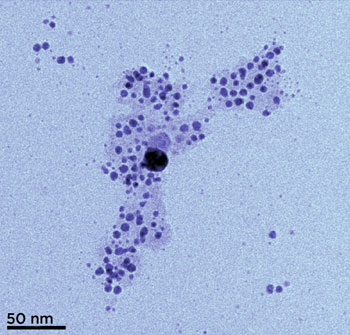
That’s why it is important to go beyond cell studies, scientists argue. Some want to see nanosilver tested in animals. Reliene and others have begun such work with laboratory mice and rats. So far, they’ve completed only a handful of such studies. That means it’s too soon to know for certain how nanosilver might affect the health of animals big and small.
Still, this early research has offered hints that nanosilver might pose problems. Last year, for instance, Reliene’s team published data suggesting the silver bits might pose a risk of cancer.
The researchers gave five mice water containing high levels of nanosilver for five days. Then the experts looked at the animals’ blood cells, at cells inside their bone marrow and at tissues from developing mouse embryos. In each case, they found damage to DNA. This molecule is found in most cells. It tells cells how to grow and function.
Reliene is especially worried about DNA damage in bone marrow. That is because in both mice and humans, blood cells form inside the marrow. The type of damage the researchers saw in the marrow of mice is the same type that leads to blood cancers in people. Leukemia and lymphoma are two examples.
“Nanosilver seems to be toxic to particular tissues, especially immature blood cells in bone marrow,” Reliene concludes. Her team shared its findings in the March 2015 Nanotoxicology.
No silver lining to this pollution
Andrew Maynard is is an environmental health scientist at the University of Michigan in Ann Arbor. His team has been running a study similar to Reliene’s. Although they have not published their data yet, they are willing to share some early findings. Chief among them: Maynard says his group “saw virtually no effect” of feeding mice very high levels of nanosilver for up to 28 days.
Both he and Reliene say more research is needed if they hope to figure why two similar studies might have produced such different outcomes.
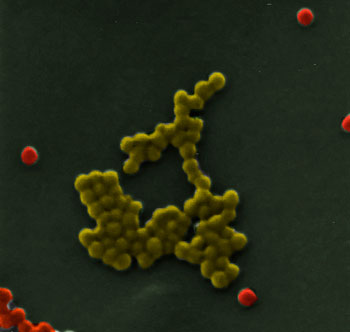
Maynard suspects if nanosilver is going to cause problems, it will probably show up in the environment. That’s where a lot of nanosilver ends up. For example, washing machines coated with nanosilver flush some of the particles into the sewer system with each load of laundry. From there, the particles end up in rivers and lakes.
“Because they are so small, nanoparticles can flow long distances in water and get picked up by fish and enter root systems,” Maynard says. They also can settle onto sediment at the bottom of a river or lake. And it is possible the particles might harm microbes that live there. Such microbes include bacteria that perform an important role: breaking down dead plants and animals.
As the microbes do this, they recycle back into the environment the nitrogen, phosphorus and carbon that had been in the dead organisms. These elements are essential nutrients for all living things.
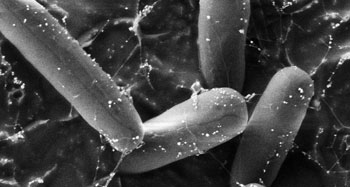
Chris Metcalfe is trying to understand how nanosilver might affect this nutrient cycle. He works at Trent University in Peterborough, Ontario, Canada. As an environmental toxicologist, he studies materials that can serve as poisons in the environment.
He and his team added high amounts of nanosilver to an experimental lake in northern Ontario. This changed the mix of bacteria living on the bottom. Metcalfe can’t say if the nanosilver led to changes in the overall numbers of specific types of bacteria. That’s because there are limits to the technology for identifying bacteria. But, he adds, “We can say it changed the composition of bacteria — some of which are involved in cycling carbon, nitrogen and phosphorus.” And this could, in turn, affect the nutrient cycle and the organisms that depend on it.
His team published its findings, three years ago, in Environmental Science and Technology.
This silver bullet might not last
But there may be an even more immediate concern, Metcalfe and other scientists worry. A steady stream of nanosilver into the environment could foster harmful microbes to become resistant to the germ killer. Microbes tend to evolve — or adapt over time — to changing conditions. And those adaptations might allow them to survive what could have been a toxic dose of silver.
If that happened, doctors could no longer rely on silver-coated medical devices or silver-treated bandages to keep such germs from sickening their patients.
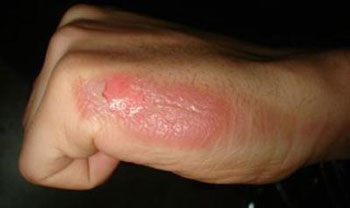
It’s particularly hard for microbes to develop a resistance to silver because the element destroys cell membranes, says Maynard. It’s not easy to recover from that. But it’s not impossible either. Scientists warn that the more nanosilver that enters the environment, the greater the chance that microbes will learn how to resist it.
As Maynard puts it: “Silver is a big line of defense against microbes. We don’t want to waste this weapon on socks.”
Power Words
(for more about Power Words, click here)
antibiotic A germ-killing substance prescribed as a medicine (or sometimes as a feed additive to promote the growth of livestock). It does not work against viruses.
argyria A permanent, blue discoloring of the skin due to an excessive exposure to silver-based preparations aimed at treating a medical condition.
bacterium (plural bacteria) A single-celled organism. These dwell nearly everywhere on Earth, from the bottom of the sea to inside animals.
cancer Any of more than 100 different diseases, each characterized by the rapid, uncontrolled growth of abnormal cells. The development and growth of cancers, also known as malignancies, can lead to tumors, pain and death.
carbon The chemical element having the atomic number 6. It is the physical basis of all life on Earth. Carbon exists freely as graphite and diamond. It is an important part of coal, limestone and petroleum, and is capable of self-bonding, chemically, to form an enormous number of chemically, biologically and commercially important molecules.
cell The smallest structural and functional unit of an organism. Typically too small to see with the naked eye, it consists of watery fluid surrounded by a membrane or wall. Animals are made of anywhere from thousands to trillions of cells, depending on their size.
chemical A substance formed from two or more atoms that unite (become bonded together) in a fixed proportion and structure. For example, water is a chemical made of two hydrogen atoms bonded to one oxygen atom. Its chemical symbol is H2O.
chemical reaction A process that involves the rearrangement of the molecules or structure of a substance, as opposed to a change in physical form (as from a solid to a gas).
chemistry The field of science that deals with the composition, structure and properties of substances and how they interact with one another. Chemists use this knowledge to study unfamiliar substances, to reproduce large quantities of useful substances or to design and create new and useful substances. (about compounds) The term is used to refer to the recipe of a compound, the way it’s produced or some of its properties.
colloid (adj. colloidal) A very finely divided substance scattered throughout another substance. Colloidal silver, for example, consists of very tiny silver particles suspended in a liquid.
DNA (short for deoxyribonucleic acid) A long, double-stranded and spiral-shaped molecule inside most living cells that carries genetic instructions. In all living things, from plants and animals to microbes, these instructions tell cells which molecules to make.
electron A negatively charged particle, usually found orbiting the outer regions of an atom; also, the carrier of electricity within solids.
element (in chemistry) Each of more than one hundred substances for which the smallest unit of each is a single atom. Examples include hydrogen, oxygen, carbon, lithium and uranium.
embryo The early stages of a developing vertebrate, or animal with a backbone, consisting only one or a or a few cells. As an adjective, the term would be embryonic — and could be used to refer to the early stages or life of a system or technology.
Food and Drug Administration (or FDA) A part of the U.S. Department of Health and Human Services, FDA is charged with overseeing the safety of many products. For instance, it is responsible for making sure drugs are properly labeled, safe and effective; that cosmetics and food supplements are safe and properly labeled; and that tobacco products are regulated.
food web (also known as a food chain) The network of relationships among organisms sharing an ecosystem. Member organisms depend on others within this network as a source of food.
germ Any one-celled microorganism, such as a bacterium, fungal species or virus particle. Some germs cause disease. Others can promote the health of higher-order organisms, including birds and mammals. The health effects of most germs, however, remain unknown.
ion An atom or molecule with an electric charge due to the loss or gain of one or more electrons.
leukemia A type of cancer in which the bone marrow makes high numbers of immature or abnormal white blood cells. This can lead to anemia, a shortage of red blood cells.
lymphoma A type of cancer that begins in immune system cells.
marrow (in physiology and medicine) Spongy tissue that develops inside of bones. Most red blood cells, infection-fighting white blood cells and blood platelets all form within the marrow.
membrane A barrier which blocks the passage (or flow through of) some materials depending on their size or other features. Membranes are an integral part of filtration systems. Many serve that function on cells or organs of a body.
microbe Short for microorganism. A living thing that is too small to see with the unaided eye, including bacteria, some fungi and many other organisms such as amoebas. Most consist of a single cell.
microscope An instrument used to view objects, like bacteria, or the single cells of plants or animals, that are too small to be visible to the unaided eye.
nano A prefix indicating a billionth. In the metric system of measurements, it’s often used as an abbreviation to refer to objects that are a billionth of a meter long or in diameter.
nanoparticle A small particle with dimensions measured in billionths of a meter.
nitrogen A colorless, odorless and nonreactive gaseous element that forms about 78 percent of Earth’s atmosphere. Its scientific symbol is N. Nitrogen is released in the form of nitrogen oxides as fossil fuels burn.
particle A minute amount of something.
Petri dish A shallow, circular dish used to grow bacteria or other microorganisms.
phosphorus A highly reactive, nonmetallic element occurring naturally in phosphates. Its scientific symbol is P.
pneumonia A lung disease in which infection by a virus or bacterium causes inflammation and tissue damage. Sometimes the lungs fill with fluid or mucus. Symptoms include fever, chills, cough and trouble breathing.
resistance (as in drug resistance) The reduction in the effectiveness of a drug to cure a disease, usually a microbial infection. (as in disease resistance) The ability of an organism to fight off disease. (as in exercise) A type of rather sedentary exercise that relies on the contraction of muscles to build strength in localized tissues.
technology The application of scientific knowledge for practical purposes, especially in industry — or the devices, processes and systems that result from those efforts.
toxic Poisonous or able to harm or kill cells, tissues or whole organisms. The measure of risk posed by such a poison is its toxicity.
toxicology The branch of science that probes poisons and how they disrupt the health of people and other organisms.
ventilator (in medicine) A device used to help a person breathe — take in oxygen and exhale carbon dioxide — when the body cannot easily do that on its own.
Word Find (click here to enlarge for printing)
